
Building out your jewelry-making tool kit? You’ll already know that there are a huge amount of metalworking files that you could invest in to perfect your craft. But let’s face it – not everyone has the budget to pick up their ideal kit right from the off. So here are the 5 Metal Working Files For Jewelry-Making Beginners.
When you’re just starting, it’s worth getting to know the different types of hand files available to you so that you can educate yourself on the merits of each one. This will help you choose the right types of metal files for the designs that you want to create without breaking the bank.
Different Types of Metal Working Files and Their Uses
Here’s our rundown of essential jewelers’ hand files and the uses for each one:
1. Flat file
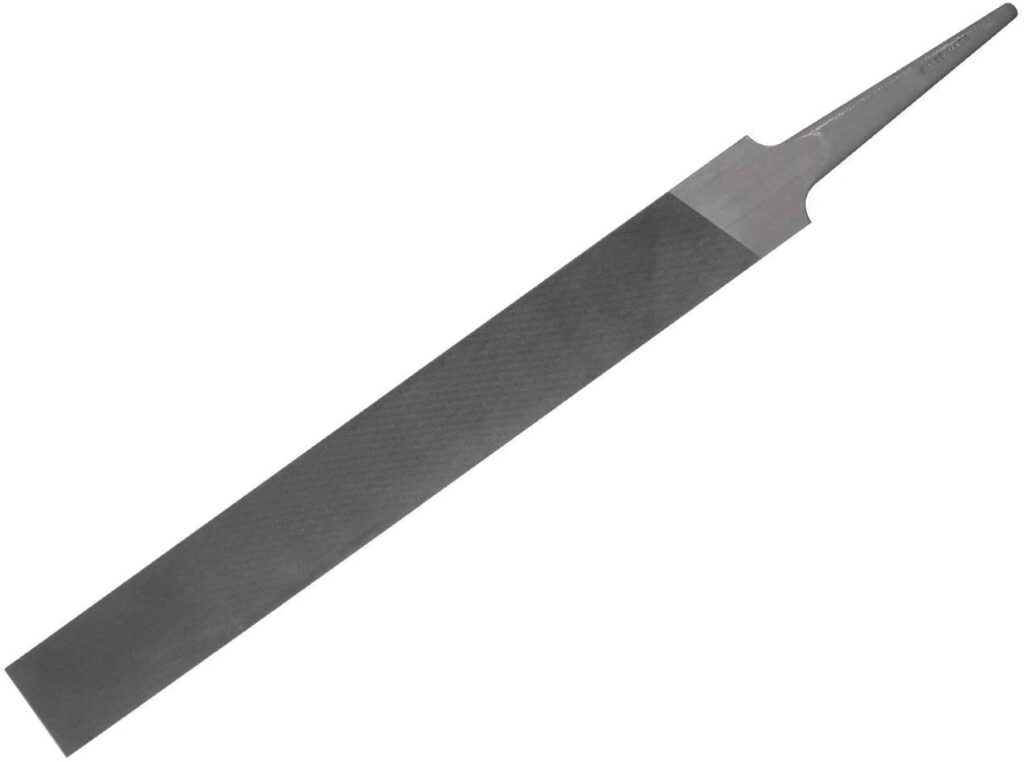
An essential for beginners. A flat file has a flat surface and uses to file larger, flat areas of metal, straighten up edges, and work on a ring’s outside curve.
With your flat file, you should always use a forward motion for filing and try to ensure that the piece you’re working on is held level for a clean, straight edge.
How about the handle?
You’ll notice that a lot of jewelers’ hand files do not come with a handle. These can be bought and fitted separately so that you can find the handle that works best for you.
So how do you fit the handle? The easiest way to do this is to carefully heat the end of your file with a hand torch and then using a mallet to fix the handle firmly in place on your hand file.
Take care when doing this for the first time, as you’ll want to make sure that your handle is completely straight and parallel with your hand file.
Our recommendation: For a good all-rounder, choose a flat file with a cut 2 grade. This level of coarseness is ideal for several metalworking jobs and will be a good choice for building out your beginner’s set of different types of hand files.
2. Half round file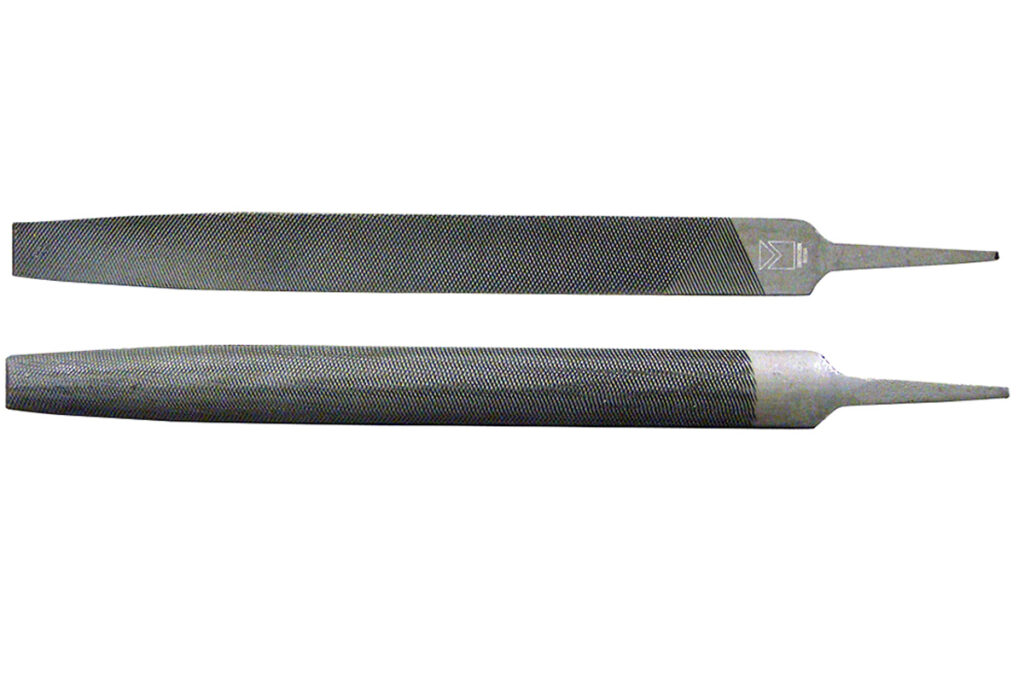
A half-round file features one flat side and one rounded side. The rounded side is useful when it comes to shaping and filing the inside of a ring shank.
When working on the inside of a ring, the half-round side of your file uses a clean, sweeping motion to shape and remove the fire scale and finish. Keep in mind that your half-round file is not solely for use with rings.
You can create all sorts of curved shapes and cutouts when you use your half-round file at different angles. When you change your half-rounded fil angles, this will change the radius of the curve that you’re working on.
Our recommendation: Half-round metal working files are a versatile tool, so it’s worth investing in one right from the off. Choose a grade 2 or 3 files to start with, as you will be able to easily remove metal material and start the finishing process with this grade of coarseness.
3. Crossing file
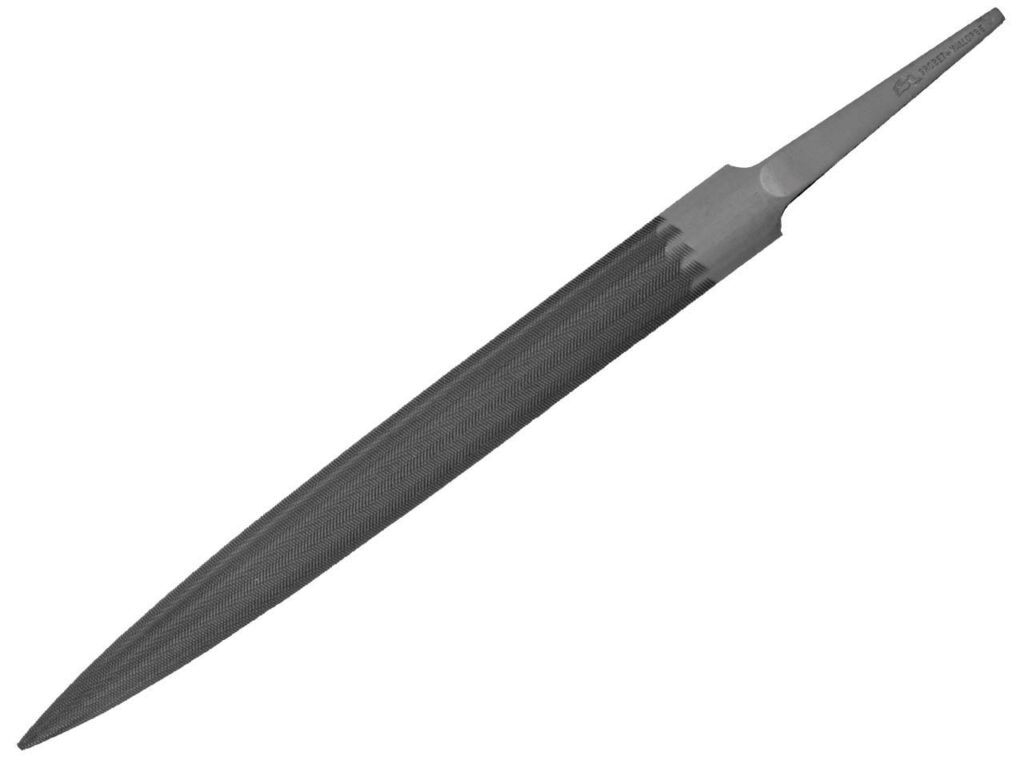
A crossing file looks similar to a half-round file. However, it actually features a curved radius on both sides. It has a slightly higher dome on one side, helping you to create a varied range of curved shapes and cut-outs.
Each side of the crossing file is tapered so that you can file in tighter spaces as well as larger concave surfaces.
Our recommendation: Stick with a half-round file, begin with, create rings and simple curves, and work your way up to investing in a crossing file as the progress of your jewelry design and become more complex.
4. Barrette file
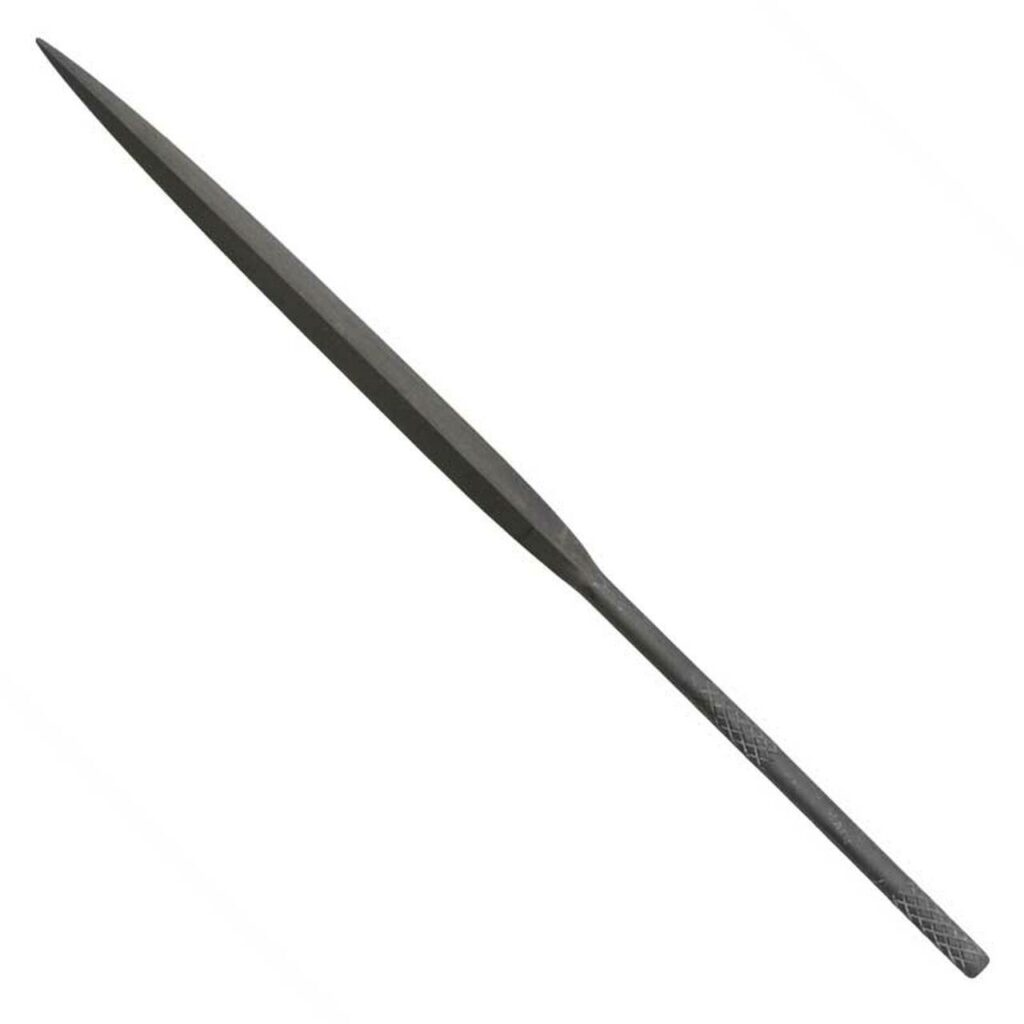
This type of metalworking file only has cutting teeth on one flat side. This makes it a great tool to work with about marking the metal you’re working with as you file.
Also, as the one side is tapered and smooth, it means you don’t run the risk of undoing your filing work by marring the metal you’re working with.
Our recommendation: Excellent for precision work on small and large areas, pick up a barette file when you need accuracy and want to avoid damaging your design and creating more filing and finishing work for yourself!
5. Needle files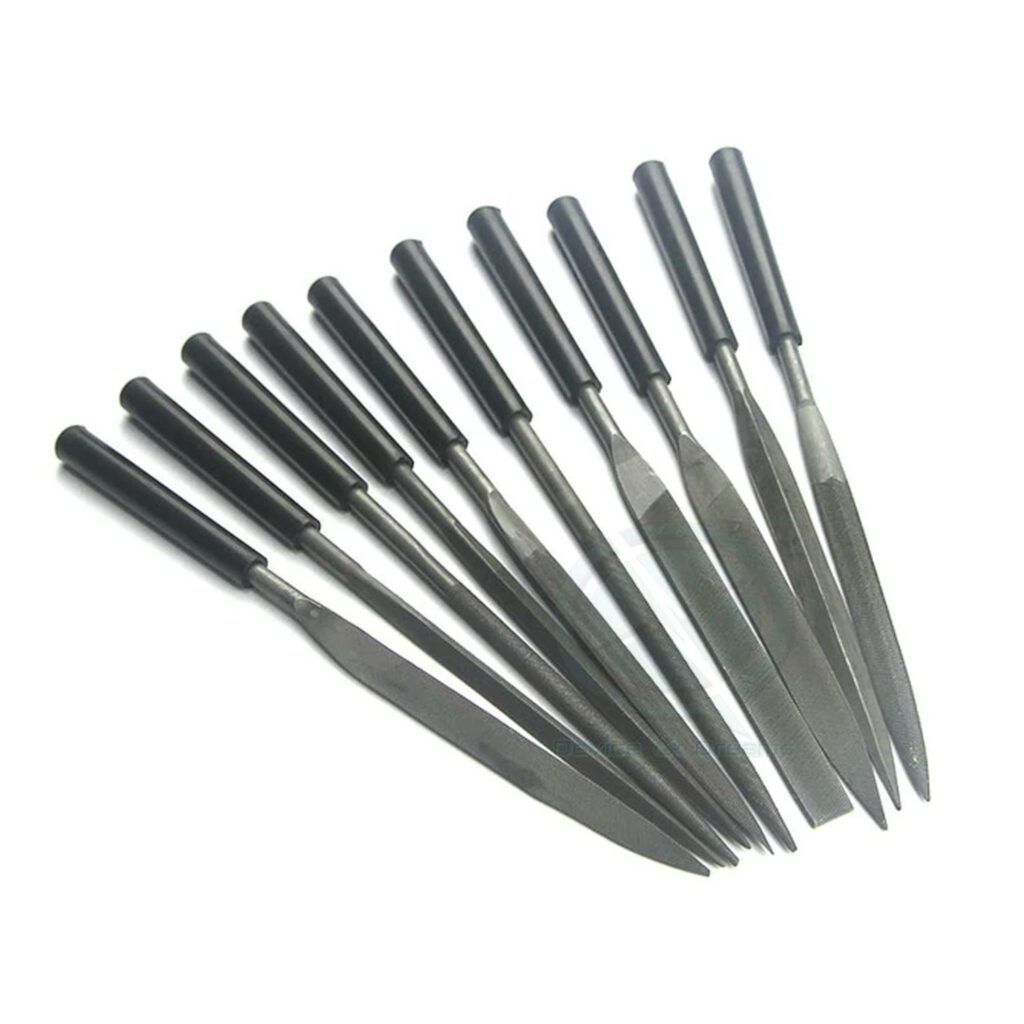
When it comes to the different types of metal files available, there are a couple of 6-inch hand files that you’ll certainly want to invest in as a beginner.
But as your metalwork and filing skills quickly progress, you’ll want to step up the finishing element of your work. One way of ensuring more precision is by getting to work with a set of needle files.
They improve precision filing simply because they are a smaller set of jewelers’ hand files. At 16cm long, with a cutting surface of 8cm long and a much smaller cutting width, needle files will help you get into all of the nooks and crannies that you need to for more delicate designs.
Needle files used for?
- Flat or pillar file: A rectangular-shaped needle file with teeth on all four of its flat sides. A general-purpose needle file for use with flat surfaces, filing the ends of wire straight or eliminating small bits of solder from joins.
- Square needle file: With a square cross-section and a tapered edge, this needle file is great for filing into corners at a 90-degree angle.
- Triangular needle file: Also tapered to a point, this needle file is adept at filing into grooves or creating grooves, for example, marking out a bend in sheet metal ready for cutting.
- Round needle file: With teeth placed all around the needle file and right to the very ti, this is the ideal file to use in tiny spots such as jump rings and clasps that have been soldered and require tidying up.
Our recommendation: If you’re still at the beginning stages of building up your metalworking files, start with a smaller set of jewelers’ needles. You’ll soon get to know which needle files work best with your style and the designs you like to work on.
Now you know more about the different types of files and their uses. You’ll feel confident investing in the right set of files for the jewelry you create.
Don’t forget to pick up all the metalworking files you need in various sizes, shapes, and cuts—5 Metal Working Files For Jewelry-Making Beginners.
P.S. Royi Sal Jewelry, as a decades-long leader in silver jewelry design and manufacturing, invites you to download our latest magazine here and profit from the exceptional jewelry designs at affordable prices you will find in the magazine. Click here to download it now.
Share this post

